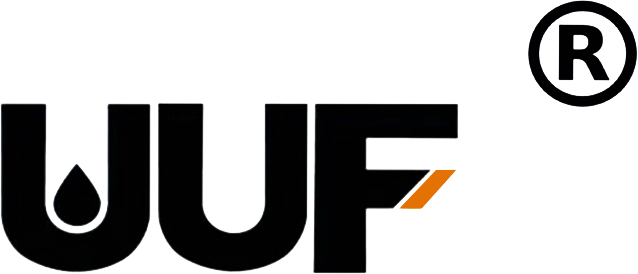Understanding Valve Cover Gasket Sealant: Essential Insights for Automotive Professionals
Time:
2025-10-13
--- The valve cover gasket sealant is a crucial element in ensuring optimal engine performance and longevity. It acts as a barrier between the engine's valve cover and the cylinder head, preventing oil leaks and maintaining the engine's oil pressure. Understanding the properties and application of valve cover gasket sealant is essential for automotive professionals engaged in maintenance and repai
---
The valve cover gasket sealant is a crucial element in ensuring optimal engine performance and longevity. It acts as a barrier between the engine's valve cover and the cylinder head, preventing oil leaks and maintaining the engine's oil pressure. Understanding the properties and application of valve cover gasket sealant is essential for automotive professionals engaged in maintenance and repair services.
One of the primary functions of the valve cover gasket sealant is to provide a reliable seal that withstands the high temperatures and pressures found within an engine. As engines operate, they generate significant heat, which can cause traditional gasket materials to degrade over time. The use of a high-quality sealant can enhance the durability of the gasket, extending the interval between necessary replacements and reducing the likelihood of leaks.
When selecting a valve cover gasket sealant, it’s important to consider several factors. First, ensure compatibility with the materials of both the valve cover and cylinder head. Many sealants are formulated to bond effectively with metal, rubber, and plastic, but confirming compatibility is vital to prevent premature failure. Additionally, professionals should look for sealants that offer excellent resistance to oil, fuel, and temperature fluctuations.
Proper application is equally important. Before applying the sealant, the mating surfaces must be thoroughly cleaned to remove any remnants of old gasket material or oil. A clean surface promotes better adhesion, allowing the sealant to form a strong bond. When applying the sealant, a uniform bead should be used, and the valve cover should be installed promptly to ensure that the sealant does not cure before the components are joined.
In addition to preventing leaks, a well-applied valve cover gasket sealant contributes to the overall efficiency of the engine. By maintaining proper oil levels and pressure, it ensures that moving parts receive adequate lubrication, thus reducing wear and tear. As a result, this not only enhances engine performance but also promotes fuel efficiency.
Lastly, it is crucial for automotive professionals to stay informed about advancements in sealant technologies. Innovations in materials and formulations can lead to improved performance characteristics, such as faster curing times and enhanced resistance to chemical degradation. By understanding these developments, professionals can make better-informed decisions, ensuring their work on valve covers is reliable and effective.
In conclusion, the valve cover gasket sealant is an essential component in automotive maintenance that plays a pivotal role in engine performance and reliability. By understanding its properties, proper application techniques, and advancements in the field, automotive professionals can effectively minimize oil leaks, enhance engine longevity, and ultimately provide better service to their clients.
The valve cover gasket sealant is a crucial element in ensuring optimal engine performance and longevity. It acts as a barrier between the engine's valve cover and the cylinder head, preventing oil leaks and maintaining the engine's oil pressure. Understanding the properties and application of valve cover gasket sealant is essential for automotive professionals engaged in maintenance and repair services.
One of the primary functions of the valve cover gasket sealant is to provide a reliable seal that withstands the high temperatures and pressures found within an engine. As engines operate, they generate significant heat, which can cause traditional gasket materials to degrade over time. The use of a high-quality sealant can enhance the durability of the gasket, extending the interval between necessary replacements and reducing the likelihood of leaks.
When selecting a valve cover gasket sealant, it’s important to consider several factors. First, ensure compatibility with the materials of both the valve cover and cylinder head. Many sealants are formulated to bond effectively with metal, rubber, and plastic, but confirming compatibility is vital to prevent premature failure. Additionally, professionals should look for sealants that offer excellent resistance to oil, fuel, and temperature fluctuations.
Proper application is equally important. Before applying the sealant, the mating surfaces must be thoroughly cleaned to remove any remnants of old gasket material or oil. A clean surface promotes better adhesion, allowing the sealant to form a strong bond. When applying the sealant, a uniform bead should be used, and the valve cover should be installed promptly to ensure that the sealant does not cure before the components are joined.
In addition to preventing leaks, a well-applied valve cover gasket sealant contributes to the overall efficiency of the engine. By maintaining proper oil levels and pressure, it ensures that moving parts receive adequate lubrication, thus reducing wear and tear. As a result, this not only enhances engine performance but also promotes fuel efficiency.
Lastly, it is crucial for automotive professionals to stay informed about advancements in sealant technologies. Innovations in materials and formulations can lead to improved performance characteristics, such as faster curing times and enhanced resistance to chemical degradation. By understanding these developments, professionals can make better-informed decisions, ensuring their work on valve covers is reliable and effective.
In conclusion, the valve cover gasket sealant is an essential component in automotive maintenance that plays a pivotal role in engine performance and reliability. By understanding its properties, proper application techniques, and advancements in the field, automotive professionals can effectively minimize oil leaks, enhance engine longevity, and ultimately provide better service to their clients.
Keyword:
valve cover gasket sealant


















